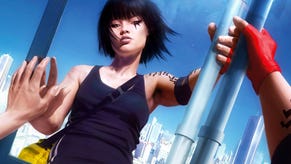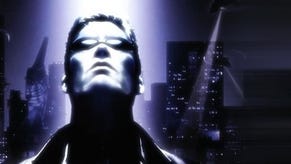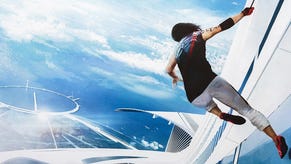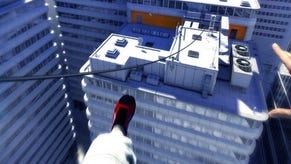Retrospective: Mirror's Edge
Fun run.
There's an ingenious methodology behind all this, however. For all the times you come up against a building that looks improbably scalable or don't know what direction you need to go when faced with a number of building tops, you're slowly and perhaps painfully undergoing an initiation.
The developers shrewdly refuse to spoon-feed you the answers to the architectural puzzles of their level design, forcing you to adapt to your current in-game situation and shaping your mind into a different mode of action. Even the hint button, which sporadically points Faith's gaze in the direction of your current goal, isn't helpful when it comes to specific navigational issues.
In essence, the entire time you're playing Mirror's Edge the game is not teaching how to think like a Runner, but how to be a Runner.
It's not a process that will happen at the same pace with any given player, but when it does, the effect is nothing short of extraordinary. Suddenly everything in the game word just clicks; you start to move faster and more efficiently, and can more skillfully navigate a given situation.
The most amazing effect is the way you begin to visualise any random bit of architecture and discern exactly how it's navigable. Much like Neo is able to "see" the Matrix for the first time when he ascends to (for lack of better terminology) enlightenment at the end of the first film, the level design in Mirror's Edge opens up once you gain your personal Runner's vision.
Obviously this doesn't work with every obstacle in the game - crafting a completely open-ended experience with Mirror's Edge's end goal in mind would be a nightmare for level designers and in-game logistics personnel alike. You may still surprise yourself by finding alternate routes and solutions to puzzles.
In my own experience, I was already floored enough after I realised that I could look at a high structure with scaffolding and know I had run up this wall, spin around in mid-air, use momentum to jump forward, move from this platform to a higher one, turn to jump again and so on.
Once you reach this experiential plateau, Mirror's Edge almost becomes an entirely new game. The first-person perspective takes on an entirely different level of meaning, heightening your senses and adding a visceral edge to movement.
Speed, too, becomes a quantifiable factor (albeit one that's sometimes hampered in the heavily-indoor later levels) - it is an exhilarating experience to simply execute complex strings of moves, and doing so quickly is just icing on the cake.
For me, this also meant embracing flight from the Blues. I hated the few times when the developers forced me into direct confrontations, though eventually I earned the trophy for beating the game without firing a weapon (only worth a silver, sadly).
One my favorite memories is sprinting down a long, multi-level set of stairs toward the end of the game, rushing past a number of Blues in SWAT gear, too fast for them to even get a shot off; the brilliant part is that by merely hopping over the top railing of the first staircase going down and following it with a proper landing, I shaved off just enough time in my escape to bypass all the spots my enemies would be before they had time to properly take their places.
Thus probably most important distinction about Mirror's Edge over a standard action game is that it's always about movement. It's essentially interactive kinesthesis, and it ventures into a mode in gaming that's really unparalleled in the industry.
Even when you're standing still, you're conceptualising exactly what that movement will look like. Chances are that if you're good - and if you've been paying attention you will be - the transition between that instant flash of visualisation and its nimble execution will happen in little more than the blink of an eye.







